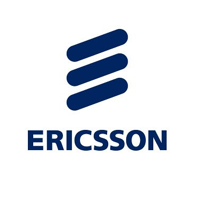Consumer Electronics Show (CES) report from Arvani.
The Consumer Electronics Show (CES) took place in Las Vegas from Jan7-10, 2020 with 170,000 attendees and 4,400 exhibitors. Our focus is on communications, cloud, AI, IoT, and digital transformation. At the start of the new year and the new decade, the transition to 5G is a key inflection point. Arvani Group’s DNC model, which we had devised over 15 years ago and has helped our clients through 2G->3G and 3G->4G transitions, comes in very handy for moving into the 5G era. DNC stands for Device, Network and Content. All three have to be in place for a new mobile network to hit its stride.
Kara Swisher, a veteran tech industry journalist and co-founder of Recode, said on a podcast that CES is no longer where tech news breaks or products get announced, and hence not so important. I respectfully disagree with her. While some companies have decided to create their own venue and timing for their announcements, it is beneficial and productive to have tech enthusiasts to come together in this humongous and exhausting show to see it all in one event. The level of perspective you get on the breadth of technologies at CES is unrivaled. In addition, the networking opportunities are amazing. And, according to CTA (organizers of the show), there were over 20,000 product debuts at this show.
5G was the undertone of many conversations. AI was embedded in many products and solutions, from flying cars to social bots. IoT sensors were all over from smart homes to gaming devices to health monitors.
From Rural Communities to Smart Cities: Use Cases Are Envisioned as 5G Deployments Expand
At the start of the new decade, the 5G networks are expanding fast. In the US, T-Mobile has launched a 600 MHz 5G network covering 200 million people, Sprint has 5G deployed on 2.5GHz spectrum in ten cities, Verizon and AT&T both have millimeter wave 5G deployments at dozens of cities.
The good news at CES was that people are imagining interesting 5G use cases from companies like John Deere helping farmers with precision agriculture to many applications in smart cities such as autonomous people and goods movers, and everything in between such as real-time inventory and AR-enabled customer experiences in retail. The 5G technical features and capabilities – like massive throughput, low latency, high reliability and massive connectivity – are better understood. Still the 5G math must make sense for the use cases to take off as building 5G networks is an expensive proposition. Since 70% of the world’s population is expected to live in urban areas by 2050, the smart city use cases will have a higher chance of success. The rural use cases bring in new requirements, such as range and coverage across vast areas (not mmWave’s sweet spot) and need more creative business models, partnerships and subsidies to become real.
©2020 Arvani

